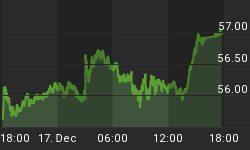Phase I of the bull market in precious metals has drawn to a close. No longer do people look at you funny if you suggest that gold and silver may outperform equities over the near term. The fact that the price of each metal has more than doubled over the last five years has gotten some people's attention. Throughout the entire duration of phase I, physical bullion and high quality mining equities were accumulated by a combination of hard money advocates, sophisticated institutions and forward thinking individuals.
Today, we believe the bull market in precious metals is moving into a second phase, similar to how stocks started to regain the public's confidence in the mid 1980s all the way through the mid 1990s. A so-called "wall of worry" remains to be climbed as phase II is sure to include several scary pullbacks over the coming years. Expect to see mainstream institutions and wealthy individuals enter the market, while the average mom and pop investor hold out faith that tech stocks and real estate will come back to the forefront.
Only when the general public starts to get in on the action will we be in the final leg of the precious metals bull market. Rather than giving you a price target, you will be able to identify this final "blow-off" phase when the price increases begin to approach those of internet stocks in the late 1990s. Moreover, there may be several cultural symptoms of a bubble in precious metals including coverage in mainstream television and radio shows, primetime dramas, and maybe even a movie about the riches to be had in gold and silver exploration. Anyone remember the short-lived television shows called The Street and Bull which went into production while the NASDAQ was topping? Turn on any AM radio station on a weekend these days, and you are bound to find multiple shows about mortgages or real estate - another sign of a topping process.
So the question we are always asked is, "Just how high do you think gold and silver will go?" The short answer is that we have no idea, but we thought it would be interesting to map out our thought process below. Let's first take a look at the average annual prices of gold and silver over the last 45 years.


The graphs above begin in the 1960s because we wanted to remind readers that the dollar prices of gold and silver were somewhat fixed for a large portion of the decade. Anytime a foreign government wanted to redeem its dollars for gold, they were able to do so for about $35/oz. As LBJ turned on the printing presses to finance "guns and butter", foreign governments became skeptical about the long-term viability of the fixed Dollar-Gold price. Time Magazine, in its February 12, 1965 issue, said, "Perhaps never before had a chief of state launched such an open assault on the monetary power of a friendly nation. Nor had anyone of such stature made so sweeping a criticism of the international monetary system since its founding in 1944. There was Charles de Gaulle last week proclaiming that the primacy of the Dollar in international dealings was finished, calling for an eventual return to the gold standard -- which the world's nations scrapped 50 years ago -- and practically inviting other countries to follow France's lead and cash in their dollars for gold."
Nixon eventually closed the gold window and the rest is history. In 1970, the average price of gold was $36.00/oz. About a decade later, gold would break past the $800.00/oz level. So some might say that since gold recently bottomed in the $270-360 range, and equal percentage increase would cause the price to rise to at least $8,000.00/oz. This would mean a ten-fold increase from its all-time high. Using the same ten-fold increase for silver, you come up with $500/oz. Frankly, we think this ultra-bullish "equal percentage increase" method is silly and should be ignored. $800/oz and $50/oz prices for gold and silver occurred at the very top of a mania, just like when the NASDAQ hit 5000 six years ago.
Using the charts we have provided shows the average annual price rather than the daily price of each metal. If you take out the year 1980, the highest average gold price was $460. Today the price of gold is $100 higher which means that we are in pretty lofty territory on a historical basis. Silver is similar too as it has only spent a couple of years averaging more than $10/oz. So the bottom line is that, on a historical basis, gold and silver are at pretty high levels. Of course, there is the huge caveat that the prices used in our analysis are nominal, and therefore one would need to rerun the charts in 2006 dollars to get a more accurate picture.
An analyst can waste lots of time using historical price charts trying to justify a particular price target for gold or silver. Similarly, an inexperienced investor can lose quite a bit of sleep trying to figure out the future direction of various price charts. Your authors have the distinct advantage of living in Texas, where the pace of life is slower, the people are friendlier, and the volatile energy markets make the daily moves in gold and silver look tame in comparison. All you need to do is sit back and think about the gargantuan liabilities this country faces in the forms of Social Security, Medicare and the overall national debt. Throw in the unsustainable trade deficit and it should be obvious that eventually our currency will lose quite a bit of its value in terms of real money - which is of course gold and silver. It may not be tomorrow, it may not be this decade, but one day, the U.S. Dollar will end up in the same place as the German Reichsmark, the French Livre and the Roman Denarius.















